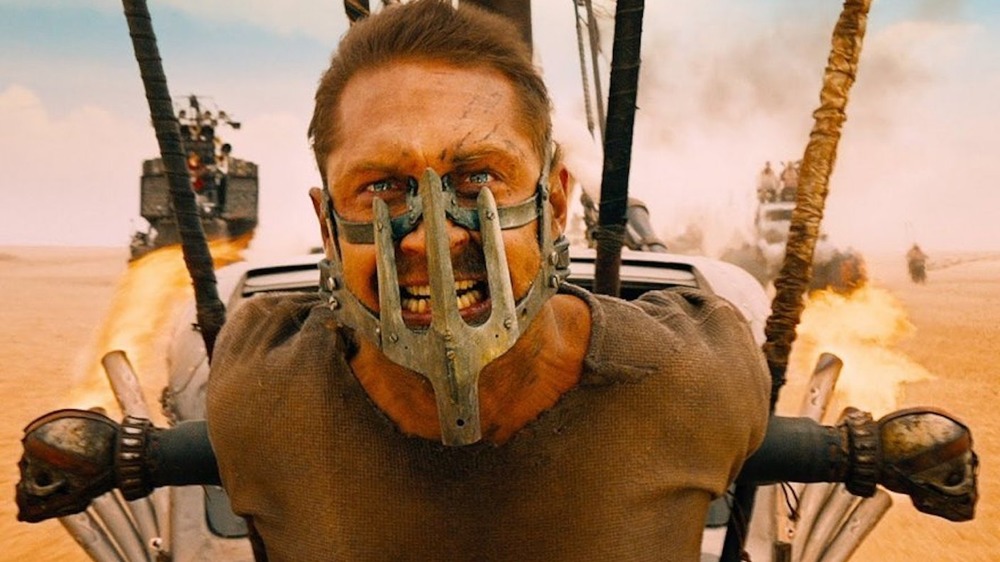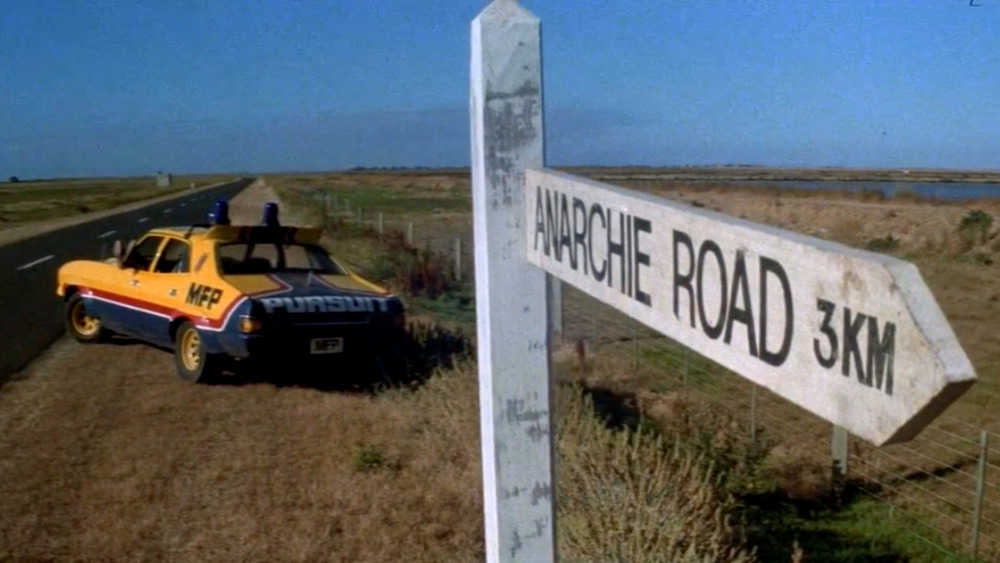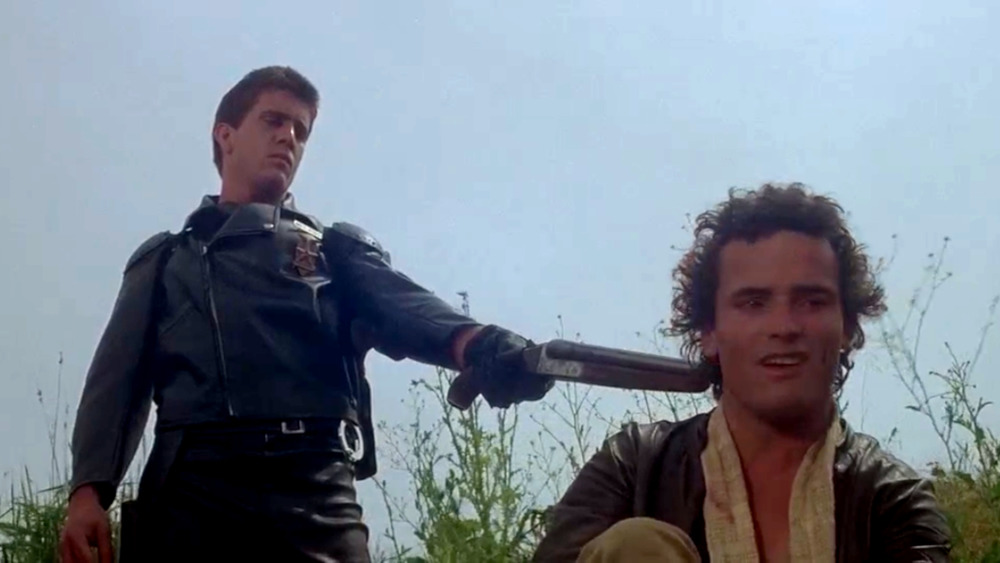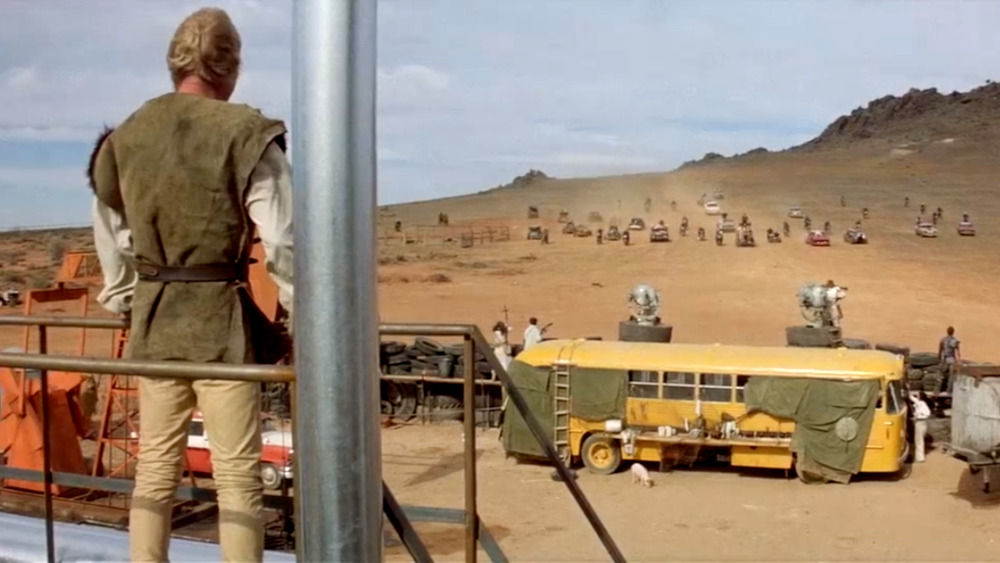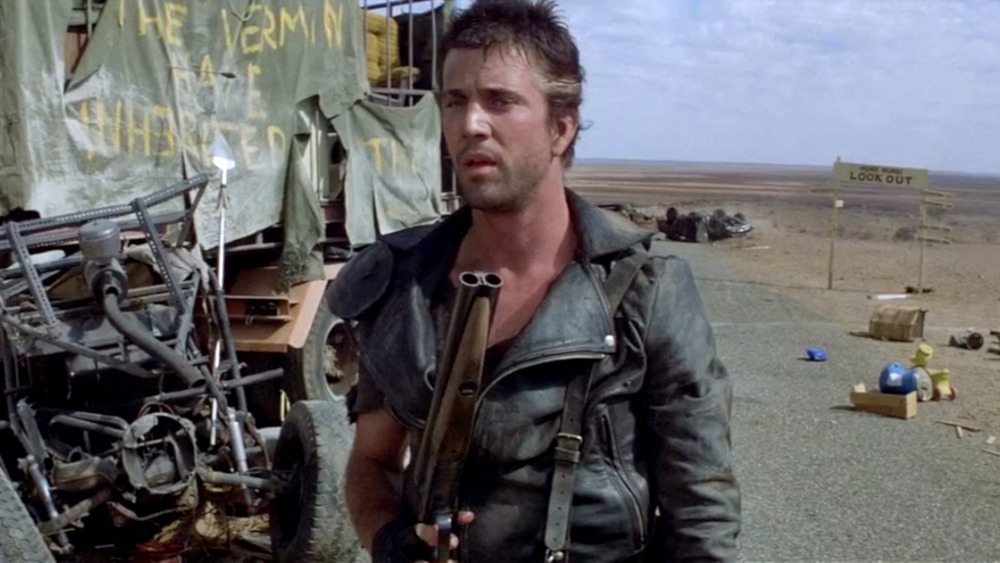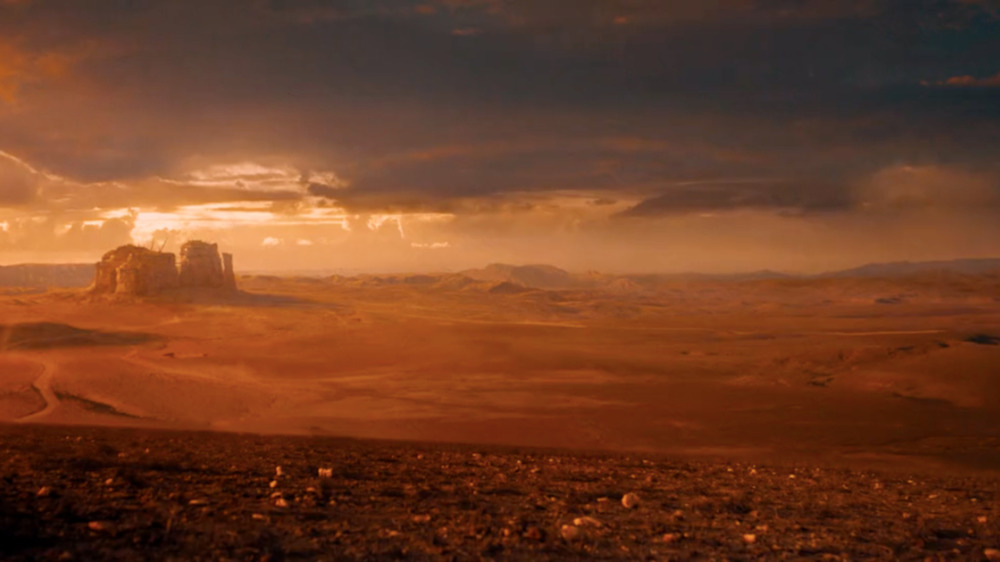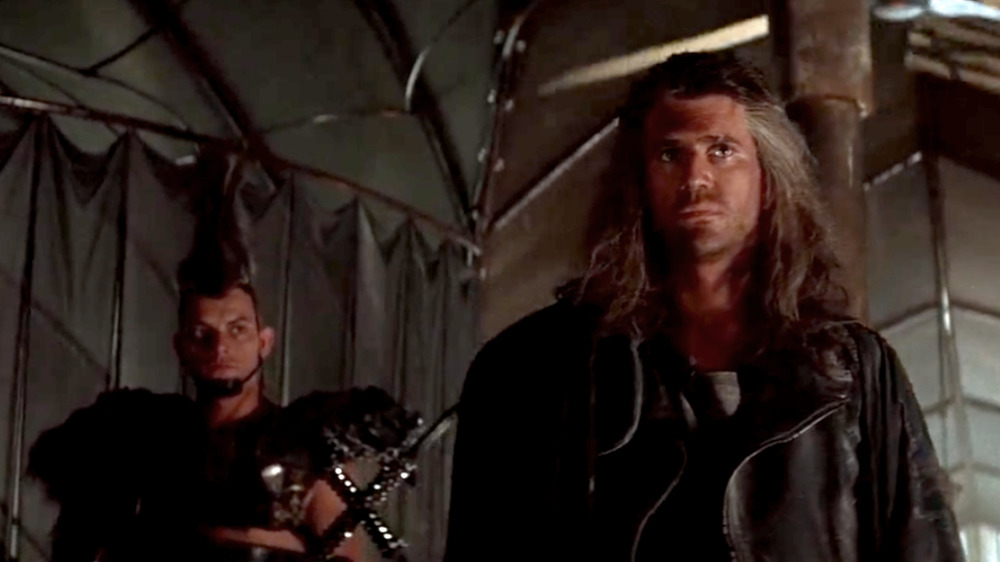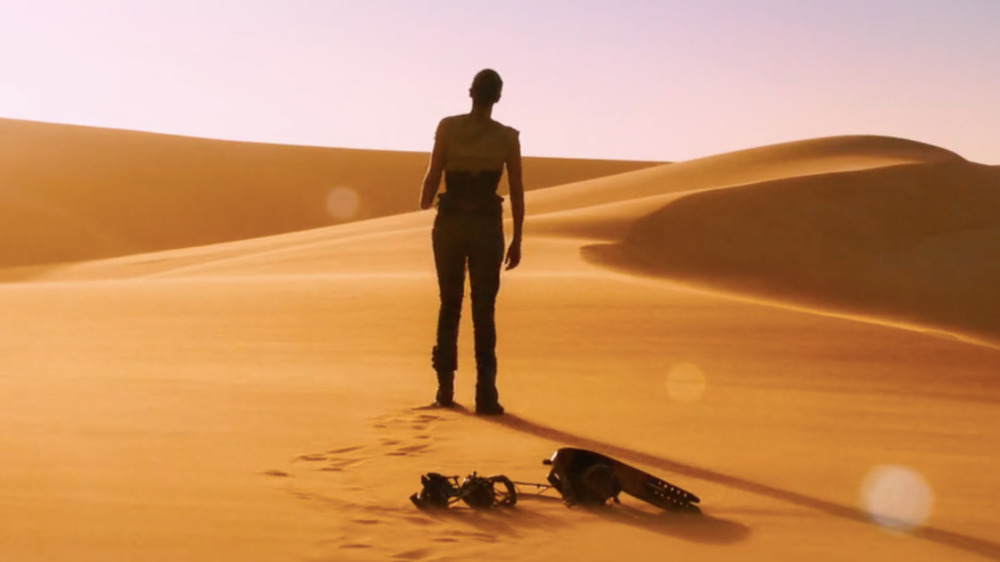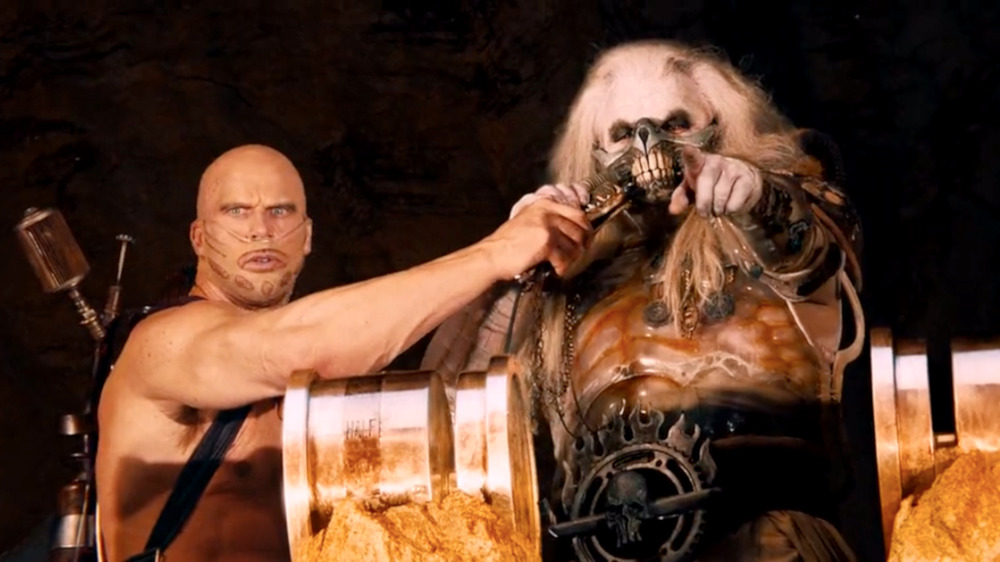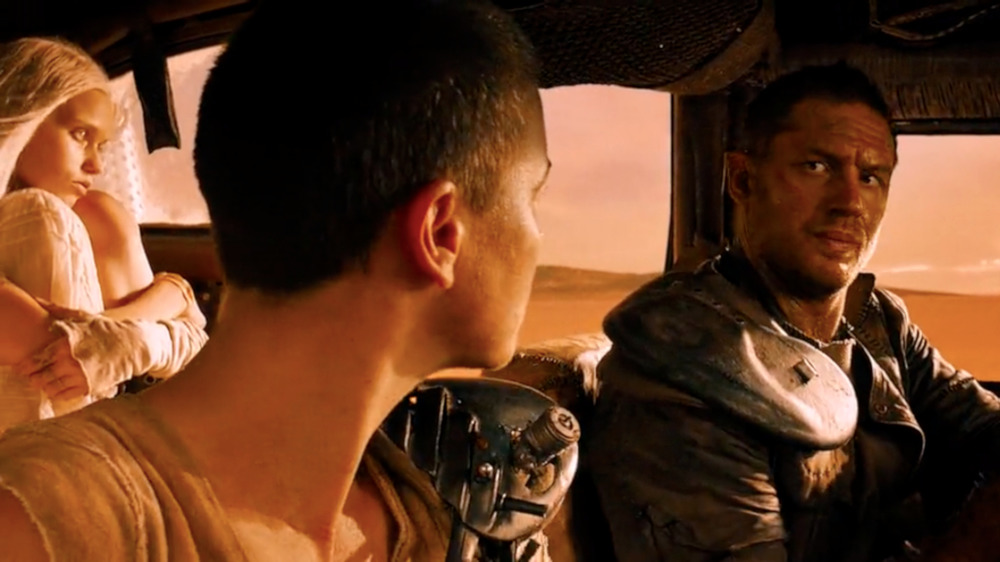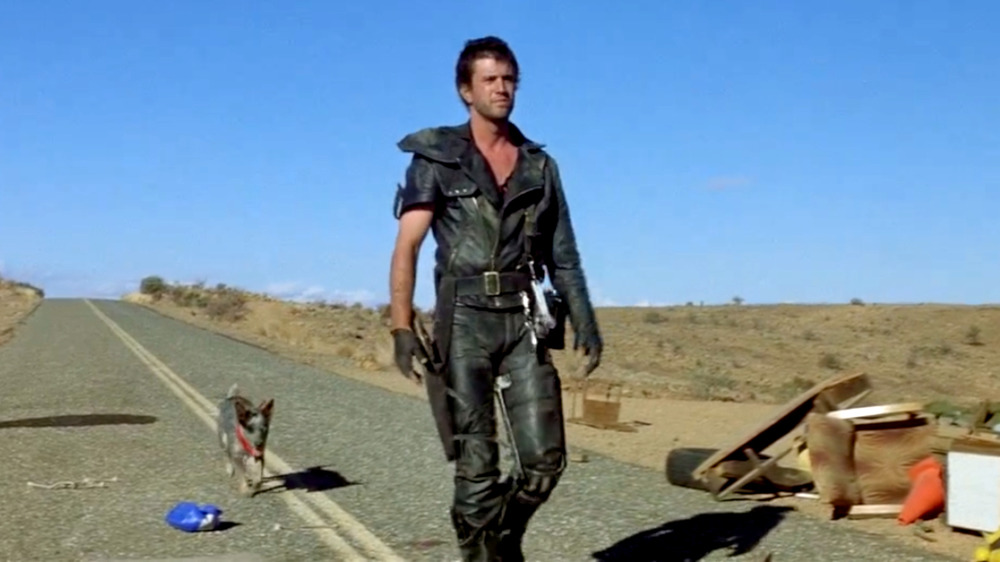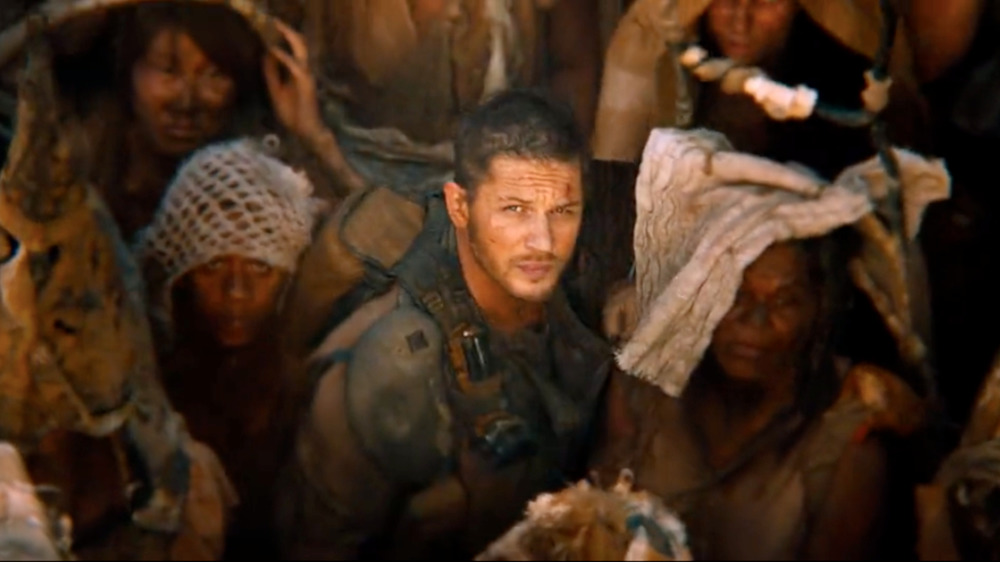The Entire Mad Max Timeline Explained
Way back in the 1970s, a young director named George Miller, along with his producing partner Byron Kennedy, made a low-budget dystopian sci-fi movie in their native Australia. Starring a young and handsome unknown named Mel Gibson, Mad Max was a nasty, violent little film about a cop who takes revenge in a future where laws are increasingly meaningless. Nobody could have guessed then that this little indie film would become a worldwide franchise, with three sequels and counting over the next 36 years.
That's exactly what happened, however. Mad Max in 1979 led to 1981's Mad Max 2, which was known only by its subtitle The Road Warrior in the U.S., where most people hadn't seen Mad Max. In 1985 came Mad Max: Beyond Thunderdome, which co-starred legendary pop star Tina Turner. For thirty years, that seemed to be the end of the series, until Mad Max: Fury Road came out in 2015. With George Miller still in the directing chair and Tom Hardy taking over the title role, Max was still going strong after all that time.
So how does the world of these movies fit together? The future seems to evolve (or perhaps more accurately, devolve) from one movie to the next, so what's the timeline of that happening? Let's examine the chronology of Mad Max, and the steps that take his world from one very much like ours to something bleaker and far more empty.
The near future according to 1979
Younger fans who started with Fury Road and then went back to the original Mad Max will be surprised to see that in that first movie, the apocalypse has not yet come. It's merely on the horizon. The world of 1979's Mad Max is one where the Australian landscape is still beautiful, where green things still grow, and where society as we recognize it still exists. However, that society is under siege.
A worldwide oil crisis, even worse than the real one that happened in 1973, has led to a rise in crime, particularly on the roads. Violent gangs hunt people to steal their gasoline and their money, and soon they're hunting and killing just for the fun of it, and because there's nobody around who can stop them. In Australia, this leads to the rise of the Main Force Patrol, a new kind of highway patrol with fast cars and little oversight. The leather-clad MFP officers do their best to tamp down the violence overtaking the roadways, but inevitably find themselves becoming targets of it as well.
Mad Max (1979)
Max Rockatansky (Mel Gibson) is a young Main Force Patrol officer specializing in the high-speed pursuit of criminals. He's already burnt out on the violence of his job, and reaches a breaking point when his fellow officer Goose (Steve Bisley) is burned alive by a chaotic gang led by Toecutter (Hugh Keays-Byrne). Max is ready to quit the MFP, but his boss persuades him to take a vacation first. Unfortunately, he and his family run into Toecutter's gang along the way, and Max's wife (Joanne Samuel) and child are killed.
Max had been worried that his job was killing his humanity, but the last of that humanity dies with his family, leaving nothing but a desire for revenge. Max takes the MFP's newest and fastest car, a black V8 interceptor known as the Pursuit Special, and hunts down Toecutter's gang, killing them one by one. When his violent mission is finished, Max drives away silently. He's no longer a cop, or even a member of society. That might actually give him an advantage, though, because society's not long for this world.
Thing get even worse on the roads
Soon after the events of Mad Max, the continuing escalation of crime and shortages of resources like gasoline leads to a total downfall of civilization, as governments become unable to exert any control over the population and collapse in the face of global economic catastrophe. No government means no legal system, no riot control, and no enforcement of order on even the most basic level.
With no laws and little food or fuel, the cities would soon become uninhabitable. Regular people are left with no options except either fending for themselves and their families, or banding together in autonomous collectives, pooling their resources to defend against roving bands of marauders and eke out some kind of existence. One such collective forms an encampment around a still-functional oil refinery in the Australian outback. Having an abundance of fuel puts them in a better position than many, but it also makes them a target of the violent gangs that rule the roads.
Mad Max 2: The Road Warrior (1981)
Five years after the events of Mad Max, Max Rockatansky is still on the road in his V8 Interceptor, although he and the car are both looking a little worse for wear. Scavenging for food and fuel with his dog, he has a run-in with a biker gang led by a creepy punk named Wez (Vernon Wells), and then meets a much friendlier weirdo (Bruce Spence) who pilots a gyrocopter.
The Gyro Captain leads Max to the aforementioned oil refinery compound, which is under siege by the Marauders, the much larger gang that Wez belongs to, which is led by the masked Humungus (Kjell Nilsson). Max soon gains entry to the compound, but the leader Papagallo (Mike Preston) wants nothing to do with him. However, Max befriends the unsocialized Feral Kid (Emil Minty) and soon wins over more of the local population. When Humungus offers to let the peaceful settlers go if they give him all of their fuel, Max makes them a better deal: He'll procure a truck that can haul their oil tanker if they'll refuel his car and let him go on his way.
With the help of the Gyro Captain, Max returns with a semi truck. When the tanker is attached, Max drives it out himself, with Humungus and the Marauders in pursuit. Left unguarded, the other settlers are free to escape to the North, unpursued. After a wreck kills both Wez and Humungus, it turns out that the tanker was full of sand. The settlers got all their gasoline out on their bus!
As Mad Max 2: The Road Warrior ends, the narrator reveals himself to be the grown up Feral Kid, who never saw Max again, and has come to think of him as a legend.
Nuclear apocalypse happens offscreen
Meanwhile, the world continues to crumble. As the remaining governments futilely attempt to retain control, nuclear war breaks out. Countless people die, and much of the world is reduced to a blasted wasteland. Where the wilds of Australia once featured green plants and blue lakes and rivers, nothing remains but dull sand, dirt, and rock. There are stories of surviving Green Places, but few will ever see them.
With so much of the world practically destroyed, resources are even more scarce. Much of the remaining water is radioactive, and what little fuel remains is hoarded by tyrants. Food is no easier to come by, and many of those who managed to survive the wars starve in their aftermath, with no one left to come to their rescue. The only remaining authority is brute force, and those who wield it gradually try to rebuild some semblance of civilization, albeit in their own image.
Mad Max Beyond Thunderdome (1985)
Fifteen years after the events of The Road Warrior, Max Rockatansky is still wandering the Australian outback, now a fully post-apocalyptic desert. After his supplies are stolen by a pilot named Jebediah (Bruce Spence, as a similar but unrelated character to the one he played in Mad Max 2), Max arrives at Bartertown, the closest thing to civilization that still exists. Although he's initially turned away because he has nothing to trade, Max is soon brought before Bartertown's founder and ruler, Aunty Entity (Tina Turner) who has a job for him.
Entity wants to use Max to take down a threat to her power known as Master Blaster. Master (Angelo Rossitto) is a little person with a big brain, while Blaster (Paul Larsson) is a very big man who doesn't talk but provides Master with transportation and muscle. Max faces Blaster in the Thunderdome, where Bartertown's disputes are settled by fights to the death, but he refuses to kill Blaster when he realizes the big man is developmentally disabled. Blaster is killed anyway, Master is imprisoned, and Max is exiled from Bartertown.
Back out in the desert, Max befriends a group of children and teenagers who live in an oasis. With their help, he takes down Bartertown, although Max and Aunty Entity ultimately part ways peacefully. The pilot from the beginning of the movie takes the kids to the ruins of Sydney, where they begin to rebuild a civilization.
Earth dies, and almost nothing is left
In the years that follow, nuclear fallout and ecological collapse continue to take their toll on the Earth, reducing every landscape to inhospitable desert. Most of Earth's population is already dead, and most of those who survive are stricken with chronic disease and wracked by starvation. Water is almost unheard of, and other resources are even rarer. By this point, the planet Earth is already dead, and the remaining human population is just scraping by off of the last bits of its dried-out husk.
Some small Green Places remain for a while, but it's only ever a matter of time until the environmental rot seeps in, and things stop growing. Inevitably, a percentage of the remaining human population become predators, making the world that much more dangerous for the defenseless. In this world and this time, as Max Rockatansky will put it, "Hope is a mistake."
Warlords rise, like Immortan Joe
In this ruined world, those who can gain access to what few resources remain are able to consolidate power and become the only remaining authorities. In an era without governments or infrastructure, there are only warlords and the people who follow them.
One such Warlord is Immortan Joe. As told in the Mad Max: Fury Road prequel comic by George Miller, Nico Lathouris, and Mark Sexton, Immortan Joe was once a military veteran named Colonel Joe Moore, who became the leader of a gang of raiders after the collapse of civilization. Aided by his right-hand man, Major Kalashnikov, and an unnamed "fat man," Joe invades a well-guarded tower of rock which sits over a huge natural aquifer. After everyone has given up and believes him dead, Joe emerges victorious over the place's defenders, thus gaining his reputation as immortal.
Joe becomes the absolute ruler of the stone towers and their aquifer, which becomes known as The Citadel. The fat man takes over a nearby oil refinery and becomes known as the People-Eater, ruler of Gas Town. Kalashnikov becomes the Bullet Farmer, remaking a lead mine into an arms plant for Immortan Joe's army. All Joe needs is heirs, but the ruination of the world makes that difficult. He has two sons, one huge and muscular but dull-witted, and the other intelligent but tiny and weak. Joe begins collecting healthy and fertile women in the hopes of producing a viable son.
Mad Max: Fury Road (2015)
Many years after the events of Mad Max Beyond Thunderdome, Max Rockatansky is still wandering the wasteland that was once Australia. He's somehow still a young man, now played by Tom Hardy instead of Mel Gibson. He's captured by the War Boys, followers of Immortan Joe (Hugh Keays-Byrne), and taken to the Citadel. It's a big day there, as Imperator Furiosa (Charlize Theron) prepares to set off on a trip to Gas Town to deliver water and bring back "guzzaline." Unbeknownst to Joe and the War Boys, however, Furiosa has snuck out Joe's "five wives" (Rosie Huntington-Whitely, Abbey Lee, Zoe Kravitz, Riley Keough, and Courtney Eaton), the four healthy women he's captured to use as breeding stock.
Meanwhile, Max is being used as a blood donor for one of the sickly War Boys, Nux (Nicholas Hoult). When Immortan Joe realizes Furiosa has stolen the brides and the War Boys ride out to stop her, Max is attached to Nux's car so the transfusion can continue. He soon escapes and allies with Furiosa, who is attempting to take the brides to the Green Place where she grew up. Unfortunately, it's long gone, and all that remains of her people is a small group of old ladies on motorcycles and one warrior woman (Megan Gale). With the help of Max and Nux, the women destroy Immortan Joe's forces and return to the Citadel, where they take over and give water to the people from whom Joe had been hoarding it away.
Expecting Max to ride the elevator to the citadel along with her and the brides, Furiosa is surprised to look down and see Max disappearing into the crowd. Once again, the Road Warrior wanders off into the realm of legend.
Why didn't Max get old?
Just how many years after Mad Max Beyond Thunderdome does Mad Max: Fury Road take place? And why is Max still so young? The continuity between these films has always been loose, and other than the recasting there's nothing to indicate that Fury Road is a reboot rather than a sequel. In fact, the beginning of the film makes it clear that Max Rockatansky has been living out in the wasteland by himself for many years, becoming a creature of pure survival instinct. Despite that mix of isolation and desperation, he never got old.
The reason why, to the extent that there's a reason at all, actually became clear as early as the second movie, The Road Warrior. The narrative of the Mad Max films is not the objective story of the man named Max Rockatansky's life. Max isn't exactly a man at all, in fact, he's a legend. Each Mad Max story represents a folktale of the post-apocalyptic future in which a lonely hero emerges from the wilderness to help people in their time of need. Max's age doesn't matter, and neither do his exact facial features or the length of his hair. What matters is how people perceive him, and what he inspires in them.
The future of the future marches on
Although it's been years now since Mad Max: Fury Road, odds are good that more tales of Mad Max are coming. Soon after Fury Road's release, director George Miller said he was working on a sequel titled Mad Max: The Wasteland. For his part, Tom Hardy has said he's attached to star in three more Mad Max movies.
In October 2020, Deadline confirmed a prequel focusing on Furiosa, starring Anya Taylor-Joy playing the younger version of Charlize Theron's character, alongside Chris Hemsworth and Yahya Abdul-Mateen II in unspecified roles. Although that film probably won't feature Max Rockatansky, it will certainly flesh out his world. According to Warner Bros, Furiosa is currently scheduled for Summer 2023.
As for when Max himself will return to the screen, we don't know for sure. George Miller, who has directed and played a role in the writing of every Mad Max film thus far, is in his mid-70s, so it's hard to say how much time remains for those three sequels Hardy was anticipating back in 2015. Still, whatever happens, Mad Max will live on. He's been around for more than forty years, and has become almost as much of a legend in the real world as in his fictional future.
